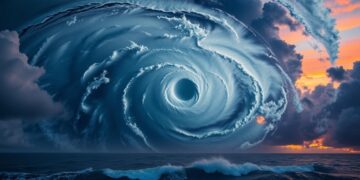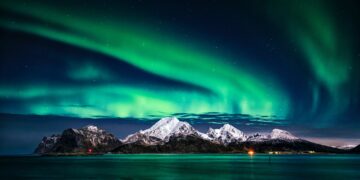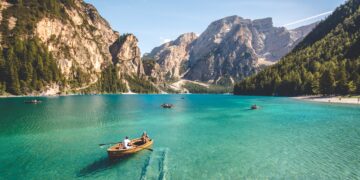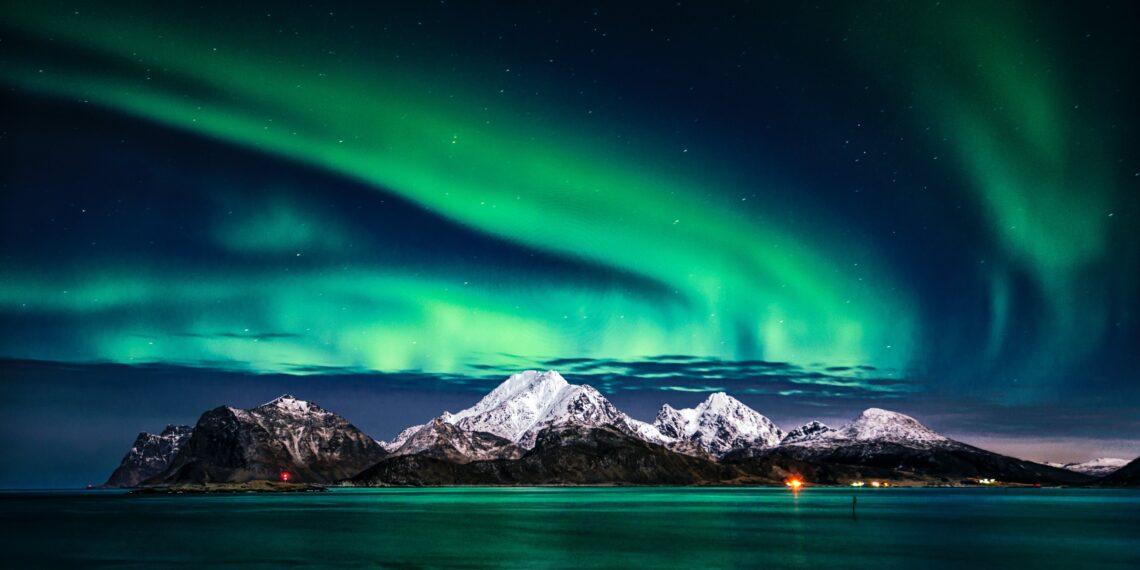Picture this: a cosmic ballet of colours, a celestial phenomenon that seems straight out of a dream. We’re talking about the Northern Lights, or the Aurora Borealis, and they’re not just a natural wonder anymore. They’ve become a global sensation, capturing the imaginations of people all over the world.
In a world filled with our own inventions and creations, the Northern Lights are a reminder of nature’s unmatched beauty. They transcend borders, languages, and cultures, uniting us in awe and wonder. Today, the Northern Lights are making headlines, trending on social media, and gracing the front pages of newspapers. Their mesmerising dance across the night sky has the world abuzz with excitement.
Why has the world fallen in love with the Northern Lights? And they continue to inspire and captivate. Whether it’s your very first time or you’re just seeking something extraordinary, the Northern Lights promise an experience like no other.
Witnessing the Enchanting Northern Lights in Canada
A Natural Phenomenon Illuminating the Canadian Skies
The ethereal Northern Lights, scientifically known as the Aurora Borealis, is a spectacle that has both the curious traveler and the passionate nature enthusiast enchanted. This celestial phenomenon occurs within a specific geographic area, embracing latitudes between 60 and 75 degrees, which includes Canada, among other northern regions.
The Northern Lights are quite the sight but understanding the science behind it makes it even more extraordinary. Auroras occur when charged particles, such as electrons and protons, collide with gases in Earth’s upper atmosphere. These collisions produce a symphony of colourful lights that dance across the night sky, leaving spectators in awe. Earth’s magnetic field plays a pivotal role in steering these charged particles towards the poles, creating the auroral ovals above the North and South Magnetic Poles.
As the Sun’s activity waxes and wanes, the intensity of the auroras fluctuates, and the oval expands or contracts accordingly. Solar wind, a stream of particles from the Sun, sometimes interacts with Earth’s magnetic field, creating breathtaking displays of light. This phenomenon, known as magnetic reconnection, sends energy back towards Earth’s poles, painting the night sky with vibrant hues.
Tips for Witnessing the Northern Lights
To up your chances of witnessing the Northern Lights in Canada, consider these helpful tips:
- Check the Local Cloud Cover Forecast: Websites like Clear Sky Charts can provide real-time data on expected cloud cover in your area, helping you plan your sky-watching adventure.
- Escape Light Pollution: Try to get as far away from city lights as possible, even a city park or a football field can offer a better view.
- Find a Clear View of the Northern Horizon: Keep in mind that the Northern Lights are best seen near the northern horizon in places like Canada. Look for a spot with a clear view of the northern sky.
- Stay Informed: Use short-term forecast tools like NOAA and the University of Alaska’s Aurora Page to check if the Northern Lights are imminent in your area.
- Follow Social Media: Twitter can be a valuable resource for real-time updates from fellow aurora enthusiasts. Many people share their experiences and sightings, offering a chance to connect with the aurora-chasing community.
Where and When to Witness the Northern Lights
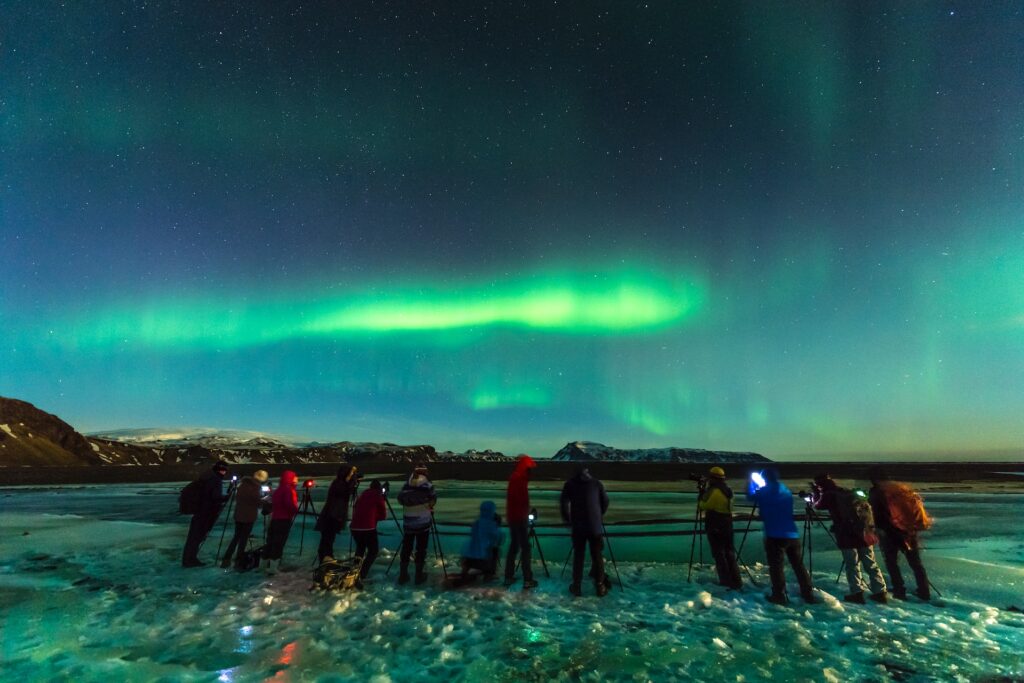
If you’re eager to witness the Northern Lights in all their glory, there are a few prime locations in Canada to choose from. Banff and Jasper National Parks, nestled in the Canadian Rockies, offer some of the best opportunities to catch this celestial display. Your best chances in these parks lie between October and April, although the lights may grace the skies year-round under the right conditions.
If you find yourself in more southern regions of Canada, like Toronto or Ottawa, keep an eye on the northern horizon. Clear nights provide a better chance to spot the auroras, away from the bright city lights. The magic often happens between 10 pm and 2 am, so it’s worth staying up late to catch a glimpse of this enchanting phenomenon.
On 6th November 2023 the lights were visible in parts of the UK, well outside the usual viewing areas.
Witnessing the Northern Lights requires careful planning, as the best places and months for viewing can vary. Here’s a guide to help you plan your aurora-chasing adventure:
Lapland, Finland: Lapland is a renowned destination for Northern Lights enthusiasts. The best time to visit is during the cold, dark winter months, from November to March. The region’s clear, unpolluted skies offer an excellent chance of seeing the auroras.
Tromsø, Norway: Tromsø is often referred to as the “Gateway to the Arctic” and is an excellent place to witness the Northern Lights. Visit between September and April for the best viewing opportunities.
Reykjavik, Iceland: Iceland’s capital city is an excellent base for Northern Lights excursions. The best time to visit is from September to mid-April.
Churchill, Canada: For those looking to experience the Northern Lights in Canada, Churchill in Manitoba is an ideal spot. The lights are visible up to 300 nights annually, with the best viewing between January and March.
Abisko, Sweden: Abisko is known for its clear skies, making it an optimal place for Northern Lights viewing. The best time to visit is from December to February.
Northern Scotland, UK: Occasionally, the Northern Lights make a surprise appearance in northern parts of Scotland, particularly during geomagnetic storms. Follow the aurora forecast and consider visiting from September to March for a chance to witness the lights.
Why the Northern Lights are a Global Fascination
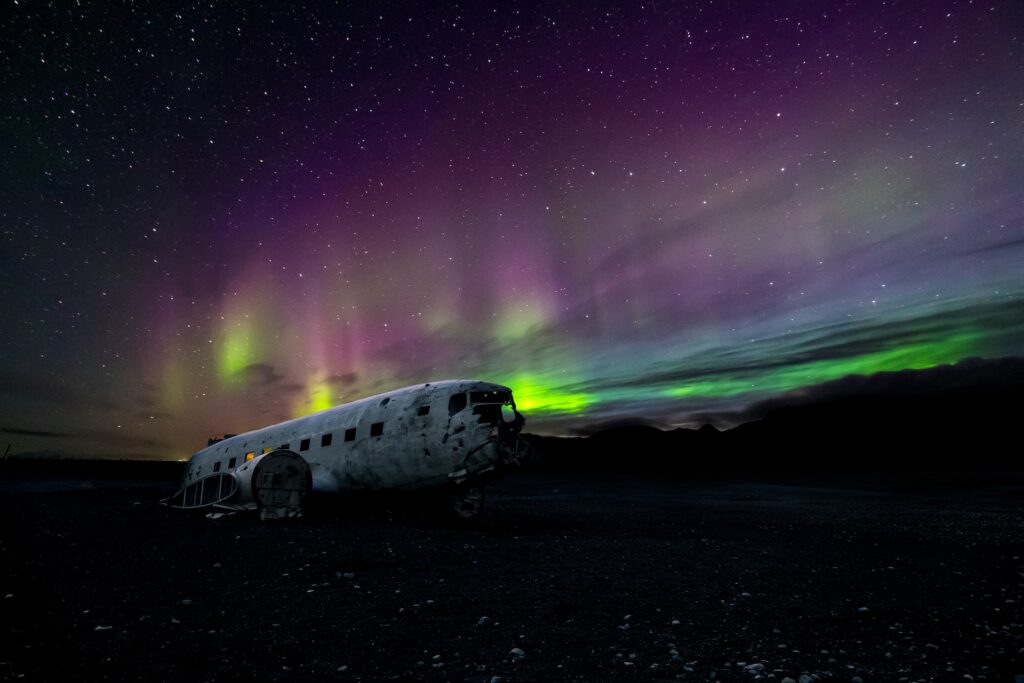
The allure of the Northern Lights extends far beyond the regions where they can be directly witnessed. This celestial phenomenon captivates people worldwide for several compelling reasons.
Natural Beauty Unmatched: The Northern Lights offer a display of natural beauty that is unlike anything else on Earth. The vivid, ever-changing colors and mesmerising dance across the night sky create a visual spectacle that transcends cultural and language barriers. People from all corners of the world can appreciate the breathtaking beauty of the auroras.
Connection to Nature: In an increasingly urbanised and digital world, the Northern Lights serve as a powerful reminder of our connection to the natural world. Witnessing this celestial phenomenon rekindles a sense of wonder and awe, inspiring a deeper appreciation for the planet we call home.
Cultural Significance: The Northern Lights hold cultural significance in many societies. For example, in indigenous cultures in the northern regions, these lights are believed to have spiritual meanings, associated with ancestors or mythical stories. This rich tapestry of cultural interpretations adds layers of intrigue to the auroras.
Dream Destination: For many, seeing the Northern Lights is a bucket-list item. The idea of venturing to remote, pristine locations like the Canadian wilderness to witness this cosmic spectacle adds an element of adventure and exploration to the experience.
Social Media Sharing: In the age of social media, the Northern Lights have become a global sensation thanks to the instant sharing of images and experiences. Social platforms are flooded with stunning aurora photos and awe-struck travellers sharing their encounters, further fueling the global fascination.
Cross-Cultural Mythology: Various cultures around the world have their own mythology and legends surrounding the Northern Lights. In Finnish mythology, the Northern Lights were believed to be caused by a magical fox that ran across the Arctic fells, creating sparks with its tail. In some Native American cultures, the lights are seen as the spirits of ancestors or animal guides. These diverse interpretations contribute to the global intrigue surrounding the auroras.
Scientific Curiosity: The Northern Lights aren’t just a visual spectacle; they also pique the interest of scientists and researchers. Studying the auroras helps scientists understand Earth’s magnetic field and the impact of solar activity on our planet. This scientific fascination resonates with a global audience eager to learn about the natural world.
Unique Viewing Opportunities: While the Northern Lights are most famously associated with the polar regions, they occasionally make appearances in unexpected places. In 2023, the lights were visible in parts of the UK, well outside the usual viewing areas. Such occurrences generate excitement and interest among people in regions that don’t typically experience this phenomenon.
Aurora Tourism: The popularity of Northern Lights tourism has led to an industry catering to travellers seeking to witness this natural wonder. Tour packages, accommodations, and guided tours in regions like Lapland, Iceland, and Canada have thrived due to the global fascination with the auroras.
10 Intriguing Facts About the Northern Lights:
- Aurora Borealis and Aurora Australis: The Northern Lights are called “Aurora Borealis” in the Northern Hemisphere and “Aurora Australis” in the Southern Hemisphere.
- The Source of the Lights: The lights are caused by charged particles from the Sun colliding with the Earth’s atmosphere, creating colourful displays.
- Dancing Lights: The name “Aurora Borealis” means “dawn of the north.” The lights appear to dance across the sky, creating an arresting display.
- Magnetic Pole Connection: The Northern Lights are often seen near the Earth’s magnetic poles because charged particles are steered toward the poles by the planet’s magnetic field.
- Visible Year-Round: While they are most often associated with winter, the Northern Lights can be visible year-round in some regions.
- Magnetosphere Protection: Earth’s magnetic field protects us from the solar wind. Occasionally, solar activity allows the solar wind to penetrate the magnetic field, creating more intense auroras.
- Astronomer Connection: The term “Aurora Borealis” was coined in 1619 by French astronomer Pierre Gassendi. “Aurora Australis” was named by Captain James Cook.
- Ancient Depictions: The earliest known record of an aurora dates back to 2600 B.C. in China, where it was recorded as “strong lightning moving around the star Su.”
- Auroral Sound: There are reports of “auroral sounds,” with some witnesses hearing hissing, crackling, or clapping sounds during auroral displays.
- Planetary Auroras: The Northern Lights are not unique to Earth. Similar auroras occur on other planets in our solar system, including Jupiter, Saturn, Uranus, Neptune, and Mars.
The Northern Lights in Canada offer a chance to witness one of nature’s most mesmerising visual spectacles. Imagine the night sky coming alive with a dazzling show that changes constantly. It’s like nature’s own light display. But there’s more to it than just beautiful lights in the sky. These lights have a fascinating history and some cool science behind them.
What’s even more incredible is that the Northern Lights aren’t just a Canadian thing. They’re a global sensation. People from all around the world are captivated by this cosmic wonder. It’s like a universal language that brings everyone together. The allure of the Northern Lights transcends borders, cultures, and languages.
So, if you’re ready to capture this celestial magic, grab your camera and make sure to bundle up warmly. The adventure awaits you in the vast Canadian wilderness. Whether you’re planning a trip to far-flung destinations or simply hoping for a surprise glimpse, the Northern Lights promise memories that will stay with you for a lifetime.















